Types of Barcodes: Choosing the Right Barcode
Table of Contents
There are many types of barcodes, and each brings unique opportunities and limitations.
With such a range of options to choose from, it can be tough to determine which barcodes will best suit your products, inventory or assets. Which barcode variants work best for your specific industry? And, most importantly, which barcodes will provide the most efficiency and business value for your enterprise?
Today, we’ll walk through the differences between 1D and 2D barcodes and dive into the 13 major 1D and 2D barcode types to help you find the right solution for your team. We’ll highlight the common uses for each one, as well as their limitations, to help you narrow down your options.
:format(jpeg))
Understanding 1D versus 2D barcodes (or linear versus matrix codes)
One-dimensional (or 1D) barcodes systematically represent data by varying the widths and spacings of parallel lines. These include some of the most traditional and well-recognized barcode types, such as the UPC and EAN codes used to identify products. 1D barcodes are also commonly referred to as linear barcodes.
Two-dimensional, (or 2D) barcodes encode data on both the horizontal and vertical axes. They are similar to a linear 1D barcode, but can represent more data per unit area. 2D barcodes include some newer barcode types, such as QR codes and PDF417.
Another key advantage of 2D barcodes is their error-protection formulas. These codes are designed to keep data intact and scannable – even after being ripped, scratched or damaged. This feature makes 2D barcodes uniquely suited to more intense, fast-paced scanning applications.
Barcode scanning software running on smart devices can read either 1D or 2D codes – or be easily upgraded to do so. However, older dedicated scanning devices (such as laser scanners) can often only read 1D codes. Not having the right barcode scanning hardware or software to scan the code your industry uses is a common barcode scanning challenge.
Understanding more about how barcode scanners work can also help to identify the right solution for you.
What barcode types are the most common?
Today, 1D (or linear) barcodes are still the most common barcode types, typically used on retail items and product packaging. Some examples of popular 1D barcodes include UPC, extensively utilized in North America, and EAN, which are more commonly found in Europe and other parts of the world. However, the increasing demand for enhanced data storage, versatility, and improved scanning capabilities is driving a noticeable shift from 1D barcodes to 2D barcodes.
The new GS1 Sunrise 2027 initiative, for example, is likely to result in the gradual phasing out of UPC and EAN barcodes. They will be replaced by QR codes and Data Matrix codes – a type of 2D barcode that offers more data storage capacity and improved scanning capabilities.
How many types of barcodes are there?
There are around 30 barcode symbology types currently in use, but some are used much more often than others. In this guide, we’ll go through the 13 most common types.
One-dimensional (1D) barcode types
1D barcodes are commonly used across enterprise operations to save time and make inventory workflows more efficient.
UPC Code
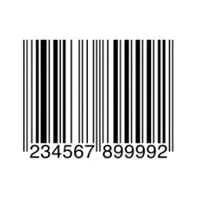
UPC barcodes are used to label and scan consumer goods at points of sale around the world – mainly in the United States.
The UPC-A variation encodes twelve numerical digits. It uses the same encoding scheme as EAN-13. The difference is that UPC-A barcodes do not show the leading zero of the barcode, which is a country code indicator for North America.
UPC-E is a smaller variation that encodes only six numerical digits.
Along with making the checkout process more efficient, UPC codes help streamline inventory systems within stores and warehouses. UPCs enable accurate and efficient product tracking all the way through production to distribution.
Industry: Retail
Variations: UPC-A, UPC-E
EAN Code
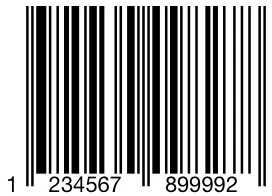
EAN barcodes are also used to label consumer goods worldwide for point-of-sale scanning, primarily in Europe. They look very similar to UPC codes, and the main distinction is their geographical application. While EAN-13 (comprising 13 digits) is the default form factor, you’ll find EAN-8 (covering eight digits) barcodes on products where space is limited, like small candies.
The main advantage of EAN codes is their flexibility. EAN-13 is a high-density barcode that can encode relatively large amounts of data in a small area – while EAN-8 codes are ideal for identifying very small products or assets. EAN codes are also easy for 1D scanners to read, making the scanning process fast and seamless.
Industry: Retail
Variations: EAN-13, EAN-8, JAN-13, ISBN, ISSN
Fast, Accurate Barcode Scanning Software
Turn smart devices into high-performance barcode scanners.
CODE 39
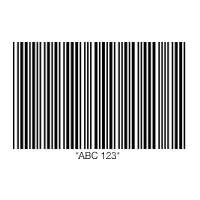
Code 39 barcodes (or Code 3 of 9) are used to label goods across many industries and are often found in the automotive industry and the U.S. Department of Defense. It enables the use of both digits and characters, and its name originates in the fact that it could only encode 39 characters – though in its most recent version, the character set has been increased to 43. It’s similar to, but not as compact as, the Code 128 barcode.
One limitation of Code 39 is its relatively low data density. This can mean that barcodes are incorrectly scanned. If using Code 39 barcodes, we recommend that you use a checksum to verify data integrity.
The size required for these barcodes also makes them ill-suited for very small goods and assets. However, Code 39 remains a popular and versatile choice, namely because it eliminates the need to generate a check digit – and can be decoded by almost any barcode reader.
Industry: Automotive and Defense
CODE 128

Code 128 barcodes are compact, high-density codes used in logistics and transportation industries for ordering and distribution. They’re geared toward non-POS products, such as supply chain applications label units with serial shipping container codes (SSCC). Because they support any character of the ASCII 128 character set, Code 128 barcodes can store highly diversified information.
The greatest advantage of Code 128 is its high data density. These barcodes can store large amounts of linear data in compact form, making them ideally suited for identifying shipped or packaged containers and items. These strengths make Code 128 barcodes a natural choice for shipping and supply chain operations.
Industry: Supply Chain
ITF (Interleaved 2 of 5)
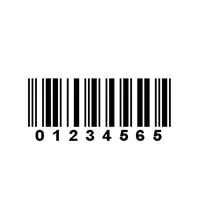
ITF (or Interleaved 2 of 5) barcodes are used to label packaging materials across the globe. The most commonly used version is the ITF-14 barcode, which encodes 14 numeric digits.
One of the greatest strengths of ITF is that it can be printed directly on corrugated cardboard. As a result, this code is widely used for encoding information on product packaging. While the Interleaved 2 of 5 barcode can only encode numbers (not letters), it does not require a check digit.
Industry: Packaging
CODE 93

Code 93 barcodes are used in logistics to identify packages in retail inventory, label electronic components, and even provide additional delivery information for the Canadian Post. Like Code 39, Code 93 barcodes come with full ASCII support. Along with enabling additional security within the code itself, the high density and compact size of Code 93s make them around 25% shorter than barcodes produced in Code 39.
Code 93 acts as a more compact and secure alternative to Code 39, partly thanks to its additional characters. Its small size and data redundancy make it ideal for use across a wide range of industries, from automotive to retail and logistics.
Industry: Retail, Manufacturing and Logistics
Codabar
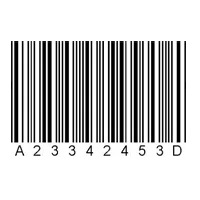
Codabar barcodes are used by logistics and healthcare professionals, including U.S. blood banks, FedEx, photo labs and libraries. Their main benefit is that they’re easy to print and can be produced by any impact style printer – even a typewriter. Therefore, users can create many Codabar codes using consecutive numbers without the use of a computer. Codabar is a discrete, self-checking symbology that encodes up to 16 different characters with an additional 4 start/stop characters.
Advantages of Codabar barcodes include ease of scanning and self-checking, which reduces errors when entering the code. However, Codabar codes are being phased out in favor of newer code forms, which allow more data to be stored in a much smaller form. Regardless, Codabar is still commonly used across logistics, healthcare and even schools, where the code is applied to the spines of library books.
Variations: Codabar, Ames Code, NW-7, Monarch, Code 2 of 7, Rationalized Codabar, ANSI/AIM BC3-1995, USD-4
Industry: Logistics, Healthcare and Education
GS1 DataBar
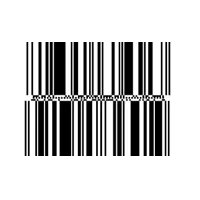
GS1 DataBar barcodes (formerly known as Reduced Space Symbology) are used by retail outlets to identify consumer coupons, produce and perishables, as well as small objects in the healthcare industry. They are more compact than typical consumer-facing barcodes. GS1 DataBar was introduced in 2001 and has become the mandated barcode type for retail coupons in the U.S.
GS1 DataBar codes offer many potential benefits. For example, leading retailers use these compact tools to reduce point-of-sale transaction times.
Variations: GS1 DataBar Omnidirectional, Truncated, Stacked, Stacked Omnidirectional, Expanded, Expanded Stacked
Industry: Retail and Healthcare
MSI Plessey

MSI Plessey (or Modified Plessey) barcodes are used for inventory management in retail environments, such as labeling supermarket shelves. They’re also used across warehouses and other storage facilities to support accurate inventory checking.
MSI Plessey codes are only capable of encoding numbers, but can be produced at any length – allowing them to encode nearly any amount of data. Its binary format is also less dependable and efficient than newer, more economic barcodes.
Industry: Retail
Two-dimensional (2D) barcode types
Today, 2D barcodes are often seen in advertising, retail operations, as linking urls to websites, and on ID cards and airline ticketing. They are rapidly gaining ground. It seems likely they will eventually replace 1D barcodes for many applications.
QR Code

QR codes are most often used in tracking and marketing initiatives, such as advertisements, magazines and business cards. They are flexible in size, offer a high fault tolerance and have fast readability, though they can’t be read with a laser scanner. QR codes support four different modes of data: numeric, alphanumeric, byte/binary, and even Kanji. They are public domain and free to use.
Industry: Retail, Entertainment and Advertising
Data Matrix Code

Data Matrix codes are usually used to label small items, goods and documents. Their tiny footprint makes them ideal for small products in logistics and operations. In fact, the U.S. Electronic Industries Alliance (EIA) recommends that they be used to label small electronic components. Similar to QR codes, they have high fault tolerance and fast readability.
Data Matrix codes offer high data density, which means they take up less space on products and assets. They’re also designed to be readable even in low resolution or with unideal scanning positions. Like many other 2D barcodes, Data Matrix codes offer strong fault tolerance as well.
Variation: Micro-Data Matrix
Industry: Electronics, Retail and Government
PDF417
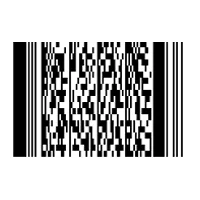
PDF417 codes are used for applications that require the storage of huge amounts of data, such as photographs, fingerprints and signatures. They can hold over 1.1 kilobytes of machine-readable data, making them much more powerful than other 2D barcodes. Like QR codes, PDF417 barcodes are public domain and free to use.
Thanks to their data efficiency, PDF417 codes are suited to a wide variety of applications, including transport and inventory management. These barcodes are also well suited for creating paper boarding passes, as well as state-issued identification cards.
Variation: Truncated PDF417
Industry: Logistics and Government
Aztec
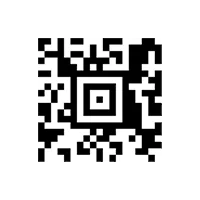
Aztec codes are commonly used by the transportation industry, particularly for tickets and airline boarding passes. The barcodes can still be decoded even if they have bad resolution, making them useful when tickets are printed poorly or presented on a phone. They can also take up less space because they don’t require a surrounding blank “quiet zone,” unlike some other 2D barcode types.
Aztec barcodes are extremely space-efficient. They can hold massive amounts of data while maintaining a relatively small size – and feature excellent error correction to prevent scanning errors. And while these codes don’t support the same range of characters as QR codes, they remain a powerful tool for transportation, healthcare and other industries.
Industry: Transportation
Finding the best barcode for your business
Now that you have a better understanding of the most common 1D and 2D barcode types and how they’re being used today, here are some questions you can ask yourself to find the right types of barcodes for your enterprise or small business.
1. What type of barcode do retail stores use?
- UPC and EAN barcodes are ideal for point-of-sale scanning in retail.
2. Which character set needs to be supported?
- Alphanumeric characters? Code 39, Code 128 and QR Code
3. How much space is available on the product packaging?
- EAN8, UPC-E, Code 128 & Datamatrix have small form factors.
4. Which material will you print the barcode on?
- ITF is great for printing barcodes on corrugated cardboard.
5. Which barcode type supports the largest amounts of data?
- PDF417 codes are great for storing huge amounts of data.
Scandit barcode scanning software for smart devices
Scandit’s barcode scanning software turns smart devices into high-performance and cost-efficient smart data capture tools. Our software leverages the computing power and high-resolution cameras found on today’s smartphones and tablets and applies AI-powered, advanced barcode decoding algorithms for unmatched efficiency and accuracy.
FAQs
What is a barcode finder pattern?
A barcode finder pattern is a specific part of a barcode designed to help barcode scanners locate and orient the barcode within the field of view. For example, the three large squares you’re probably used to seeing in the corners of QR codes are a finder pattern.
Different types of barcodes have different finder patterns, but they all perform a similar function. They do not encode data themselves, but act as reference points that allow barcode scanning software to detect position, size, and rotation.
These variations can then be adjusted for, enabling scanning algorithms to scan the barcode accurately.
Without finder patterns, barcode scanning software would struggle to cope with real-world conditions where barcodes appear at different sizes and angles, depending on how the user positions their smart device.
What is a barcode quiet zone?
A barcode quiet zone is the empty space surrounding a barcode. Without a quiet zone, barcode scanners may misinterpret surrounding text or images as part of a barcode. This can lead to errors or failed scans.
Quiet zones should match the colour of the spaces within your barcode. (Usually, this is white).
The minimum required quiet zone varies from barcode to barcode but is usually defined in proportion to the size of a line or square within the barcode pattern. For example, the minimum quiet zone for a QR code needs to be four times the width of the smallest square within the QR code. To allow for printing tolerance, it’s also a good idea to add a few extra millimeters to your quiet zone.
Don’t guess — check quiet zone industry standards for whatever barcode you are using as these can vary widely. Also, don’t forget that if you scale a barcode up or down, the quiet zone will need to vary in proportion.